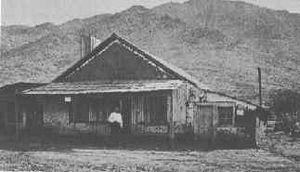
Wickenburg is a town in Maricopa and Yavapai counties, Arizona, United States. The population was 7,474 at the 2020 census, and was estimated to be 7,920 in 2022.

Yarnell is a census-designated place (CDP) in Yavapai County, Arizona, United States. The population of Yarnell was 649 at the 2010 census. Yarnell's economy is based on ranching, mining and services to travelers and retirees. Peeples Valley, three miles north, is closely linked to Yarnell.
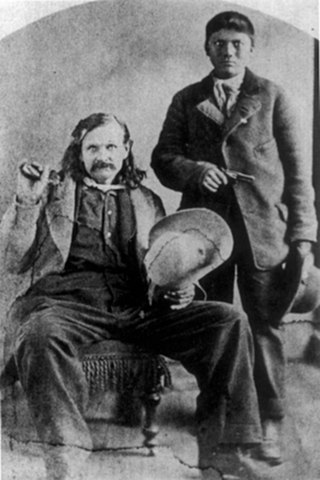
John W. Swilling was an early pioneer in the Arizona Territory. He is commonly credited as one of the original founders of the city of Phoenix, Arizona. Swilling also played an important role in the opening of the central Arizona highlands to white settlement. His discoveries resulted in a gold rush to the region, and this in turn led to the establishment of Arizona's first territorial capital at the mining town of Prescott.

Ruby is a ghost town in Santa Cruz County, Arizona, United States. It was founded as a mining town in Bear Valley, originally named Montana Camp, so named because the miners were mining at the foot of Montana Peak.

The Vulture Mine was a gold mine and settlement in Maricopa County, Arizona, United States. The mine began in 1863 and became the most productive gold mine in Arizona history. From 1863 to 1942 A.D., the mine produced 340,000 ounces of gold and 260,000 ounces of silver. Historically, the mine attracted more than 5,000 people to the area, and is credited with founding the town of Wickenburg, Arizona. The town that served the mine was known as Vulture City.

Pauline Weaver, born Powell Weaver, was an American mountain man, trapper, military scout, prospector, and explorer who was active in the early Southwestern United States. Several geographic features in Arizona are named after him.

Weaver, or Weaverville, is a former gold mining town, now a deserted ghost town, in Yavapai County, Arizona, United States. All that remains are some rusting mining machinery, a partially restored cemetery, and the ruins of a stone house.

Alamo Crossing is a ghost town in Mohave County, Arizona, United States. The town was settled in the late 1890s, in what was then the Arizona Territory. It served as a camp for mining prospectors in the manganese-rich Artillery Mountains, being the only town in the area. After 1918, the post office permanently closed, but the town was only intermittently abandoned, with its founders often present through until at least the mid-1950s. The town was intentionally flooded in 1968 to create Alamo Lake. In 2020, the area of Alamo was revived for mining again, this time for surface-level gold prospecting.
Gila City is a ghost town in Yuma County in the U.S. state of Arizona. The town was settled in 1858 in what was then the New Mexico Territory.
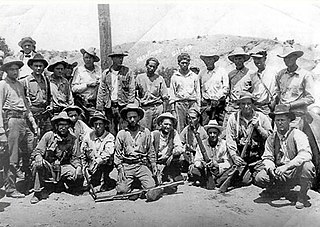
The Ruby Murders is the popular name for three separate incidents involving the deaths of six American citizens near the town of Ruby, Arizona. The first incident occurred in February 1920 when Mexican bandits robbed and killed the two owners of the Ruby Mercantile. A second attack happened in April 1921 when Mexican bandits robbed and killed the store's new owners. Two of the bandits were arrested for the crime, but they briefly escaped custody in July 1922 after killing another two men, which led to the largest manhunt in the history of the Southwest.

Dick Wickenburg "Dick Wick" Hall was an American humorist. As co-founder and initial resident of Salome, Arizona he began publishing The Salome Sun, a newsletter containing tall tales and humorous prose. Hall created a variety of characters for his newsletter, the most famous being a seven-year-old frog that had never learned to swim. Excerpts from the Sun became a regular feature of The Saturday Evening Post, appearing in the magazine from 1920 until Hall's death in 1926.
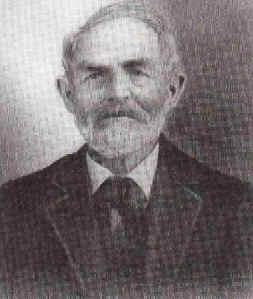
Henry Wickenburg was a Prussian prospector who discovered the Vulture Mine and founded the town of Wickenburg in the U.S. state of Arizona. Wickenburg never married. Mrs. Helene Holland inherited Wickenburg’s personal property in 1903, while he was still alive, and the remainder of his estate in 1905 after Henry Wickenburg died from a gunshot wound in the head. His death was deemed a suicide, but many questioned this ruling. The mine that he discovered produced as much as $70 million worth of gold during its course of operation, making it the most important gold mine in Arizona.
Octave is a ghost town in Yavapai County, Arizona, United States.

Gillett, Arizona, is a ghost town in Yavapai County, Arizona, United States. It has an estimated elevation of 1,362 feet (415 m) above sea level. Historically, it was a stagecoach station, and then a settlement formed around an ore mill serving the Tip Top Mine, on the Agua Fria River in Yavapai County in what was then Arizona Territory. It was named for the mining developer of the Tip Top Mine, Dan B. Gillett and is spelled incorrectly as Gillette on U. S. Topographic Maps and elsewhere.
Constellation is a former mining town in Yavapai County, Arizona, United States. It has an estimated elevation of 3,560 feet (1,090 m) above sea level. The town was started to support the Monte Cristo Mine, which was later joined by several other mines. In 1925 the town had a post office and some 250 residents, but no trace of it is left, though ruins of the various mines surround the ghost town site.
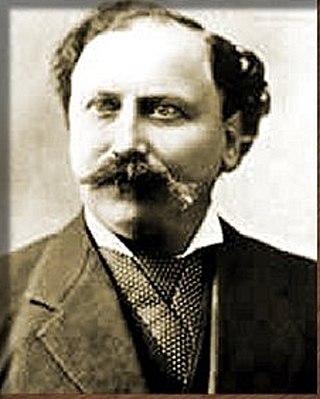
Henry Garfias was the first city marshal of Phoenix, Arizona. He was also a gunfighter who became the elected official of Mexican descent holding the highest office the Phoenix region in the 19th century.

Trinidad Swilling Shumaker, known as "The Mother of Phoenix" was a pioneer and the wife of Jack Swilling, the founder of Phoenix. Mrs. Swilling was involved in local civic activities and promoted the public recognition of her husband as founder of Phoenix. She was also involved in dispute which made the local news as to who was the first white woman to settle in the Phoenix townsite. In 1868, Swilling founded the first pioneer home in the Salt River Valley.
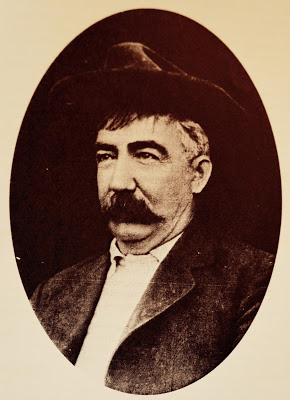
Joseph Mayer was an American businessman, gold prospector and pioneer who founded the town of Mayer, Arizona.
